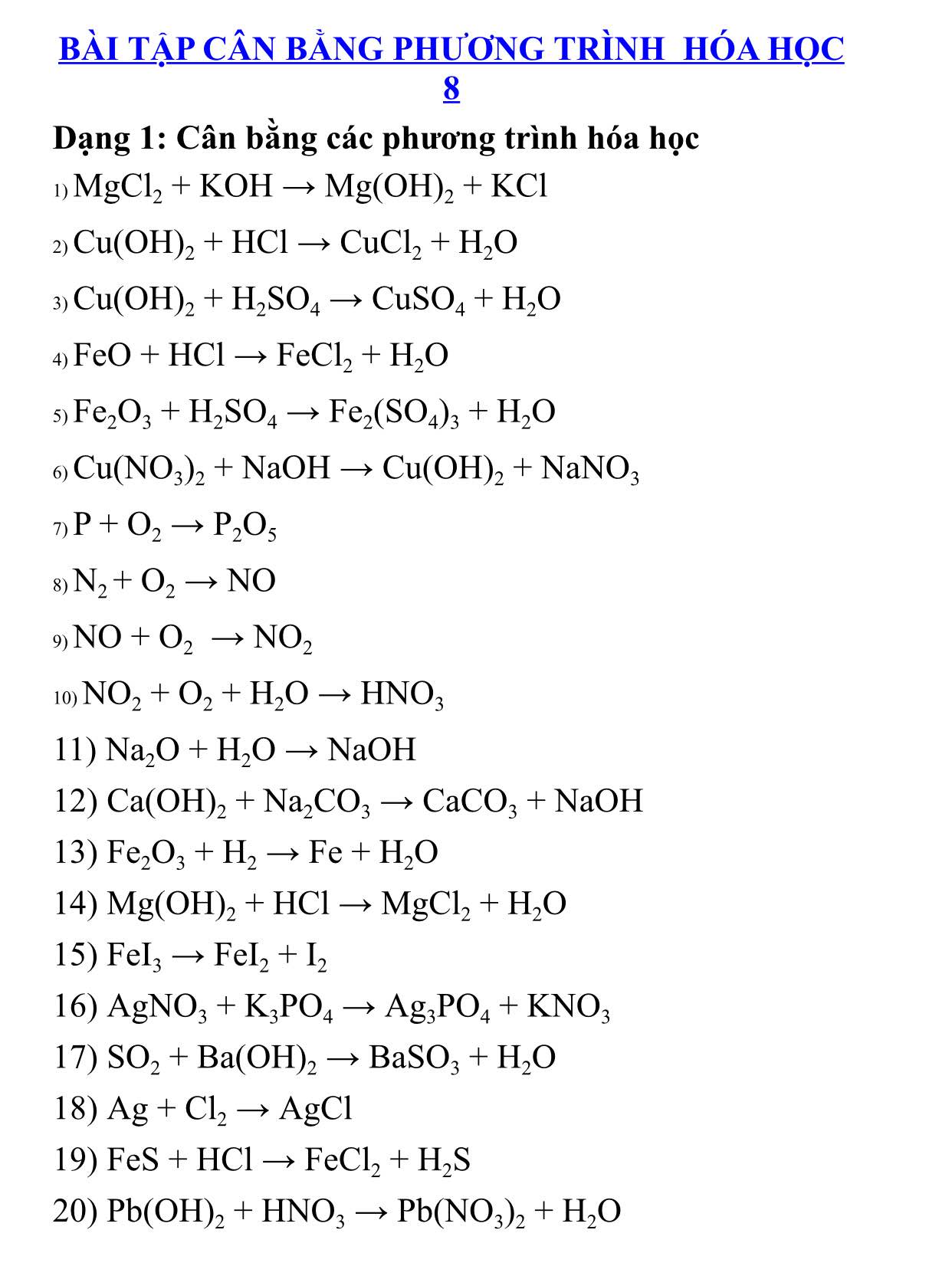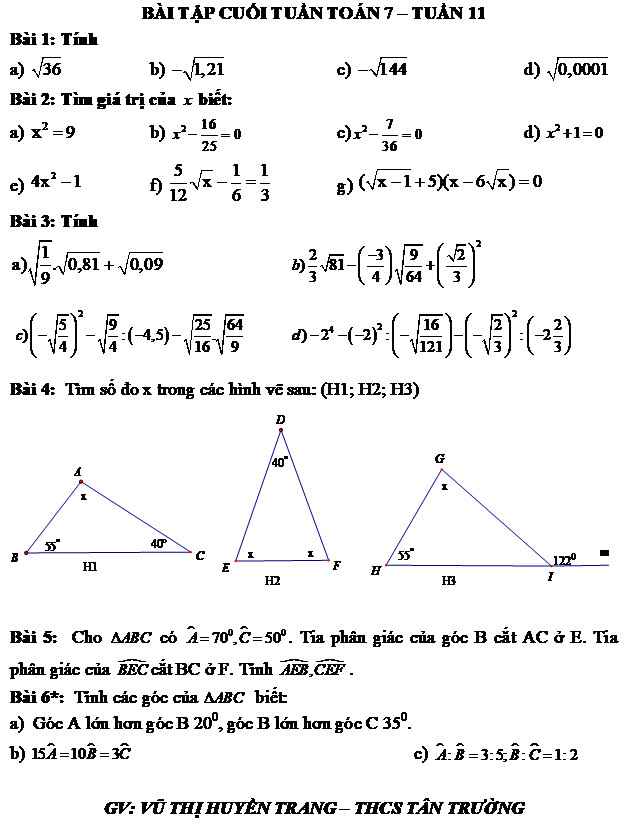Điền giúp mình với, cảm ơn rất nhiều ạ
Hãy nhập câu hỏi của bạn vào đây, nếu là tài khoản VIP, bạn sẽ được ưu tiên trả lời.



mở bài là giới thiệu về cụ nha mn em viết lộn ạ
thân bài là đóng góp ạ

câu 3 Gọi vận tốc ban đầu là x(x>0)km/h
vân tốc tăng thêm khi đi 100km là x+10 km/h
thời gian đi hết 100km là \(\dfrac{100}{x}h\)
thời gian đi hết quãng đường còn lại là \(\dfrac{220-100}{x+10}h\)
vì tổng tg đi hết quãng đường AB là 4h nên ta có pt
\(\dfrac{100}{x} \)+\(\dfrac{220-100}{x+10}\)=4
giải pt x=50
vậy vận tốc ban đầu đi là 50 km/h
Gọi x (km/h) là vận tốc ban đầu của ô tô (x > 0)
\(\Rightarrow\) x + 10 (km/h) là vận tốc lúc sau của ô tô
Thời gian đi 100 km đầu là: \(\dfrac{100}{x}\) (h)
Thời gian đi hết quãng đường còn lại là: \(\dfrac{220-100}{x+10}=\dfrac{120}{x+10}\) (h)
Theo đề bài ta có phương trình:
\(\dfrac{100}{x}+\dfrac{120}{x+10}=4\)
\(\Leftrightarrow100\left(x+10\right)+120x=4x\left(x+10\right)\)
\(\Leftrightarrow100x+1000+120x=4x^2+40x\)
\(\Leftrightarrow4x^2+40x-220x-1000=0\)
\(\Leftrightarrow4x^2-180x-1000=0\)
\(\Leftrightarrow x^2-45x-250=0\)
\(\Delta=\left(-45\right)^2-4.1.\left(-250\right)=3025\)
\(\Rightarrow\Delta=55\)
\(x_1=\dfrac{-\left(-45\right)+55}{2.1}=50\) (nhận)
\(x_2=\dfrac{-\left(-45\right)-55}{2.1}=-5\) (loại)
Vậy vận tốc ban đầu của ô tô là 50 km/h

Gọi điện trở ampe kế là Ra
Hiệu điện thế hai đầu ampe kế A2 là:
\(UA2=I2.Ra=1.Ra=Ra\)
Mà ta lại có: \(UA2=UA3+IA3.2r=IA3.Ra+IA3.2r=0.5Ra+0.5.2r=0.5Ra+r\)
=> \(Ra=0.5Ra+r\)
=> \(r=0.5Ra\)
Ta có: \(IMP=IA2+IA3=1+0.5=1.5\left(A\right)\)
=>\(UMP=IMP.r=1.5r=1,5.0.5Ra=0.75Ra\)
=>\(UMQ=UMP+UA2=0.75Ra+Ra=1.75Ra\)
=> Cường độ dong điện chạy qua ampe kế A1 là:
\(IA1=\dfrac{UMQ}{Ra}=\dfrac{1.75Ra}{Ra}=1.75\left(A\right)\)

1. Mohenjo-Daro was one of the first city.
2. If we look at a map of Mohenjo-Daro, we can see the straight street.
3. Rome was the capital of the Roman Republic and Empire for a thousand years.
4. London was the biggest city in the world between 1831 and 1925.
5. Tokyo is the biggest city in the world now.

B2"
`a)3/4+1/2-1/4`
`=3/4-1/4+1/2`
`=1/2+1/2=1`
`b)(-2)/3*5/7+(-2)/3*2/7+5/3`
`=(-2)/3*(5/7+2/7)+5/3`
`=-2/3+5/3=1`
`c)(-5)/9+5/9:(1 2/3-2 1/6)`
`=(-5)/9+5/9:(5/3-13/6)`
`=(-5)/9+5/9:(-3)/6`
`=(-5)/9+5/9*(-2)`
`=5/9*(-1-2)`
`=5/9*(-3)=-5/3`
b3:
`a)x*3/6=2/3`
`=>x*1/2=2/3`
`=>x=4/3`
`b)x/150=5/6*(-7)/25`
`=>x/150=(-7)/(6*5)=-7/30`
`=>x/150=(-35)/150`
`=>x=-35`
`c)1/2x+3/5x=3`
`=>11/10x=3`
`=>x=3*10/11=30/11`


a: Khi x=3 thì \(A=\dfrac{3\cdot3}{3-2}=9\)
b: C=A+B
\(=\dfrac{3x}{x-2}-\dfrac{6}{x-2}-\dfrac{x^2+4x+4}{x^2-4}\)
\(=\dfrac{3x-6}{x-2}-\dfrac{x+2}{x-2}\)
\(=\dfrac{3x-6-x-2}{x-2}=\dfrac{2x-8}{x-2}\)
c: Để C nguyên thì 2x-4-4 chia hết cho x-2
=>\(x-2\in\left\{1;-1;2;-2;4;-4\right\}\)
=>\(x\in\left\{3;1;4;0;6\right\}\)



 ai giúp mình với ạ, mình cảm ơn rất nhiều
ai giúp mình với ạ, mình cảm ơn rất nhiều



 GIÚP MÌNH VỚI Ạ MÌNH ĐANG CẦN GẤP Ạ MINH CẢM ƠN RẤT NHIỀU
GIÚP MÌNH VỚI Ạ MÌNH ĐANG CẦN GẤP Ạ MINH CẢM ƠN RẤT NHIỀU

\(11,Na_2O+H_2O\rightarrow2NaOH\\ 12,Ca\left(OH\right)_2+Na_2CO_3\rightarrow CaCO_3+2NaOH\\ 13,Fe_2O_3+3H_2\rightarrow2Fe+3H_2O\\ 14,Mg\left(OH\right)_2+2HCl\rightarrow MgCl_2+2H_2O\\ 15,2FeI_3\rightarrow2FeI_2+2I_2\\ 16,3AgNO_3+K_3PO_4\rightarrow Ag_3PO_4\downarrow+3KNO_3\\ 17,SO_2+Ba\left(OH\right)_2\rightarrow BaSO_3\downarrow+H_2O\\ 18,2Ag+Cl_2\rightarrow2AgCl\\ 19,FeS+2HCl\rightarrow FeCl_2+H_2S\\ 20,Pb\left(OH\right)_2+2HNO_3\rightarrow Pb\left(NO_3\right)_2+2H_2O\)
\(1,MgCl_2+2KOH\rightarrow Mg\left(OH\right)_2+2KCl\\ 2,Cu\left(OH\right)_2+2HCl\rightarrow CuCl_2+2H_2O\\ 3,Cu\left(OH\right)_2+H_2SO_4\rightarrow CuSO_4+2H_2O\\ 4,FeO+2HCl\rightarrow FeCl_2+H_2O\\ 5,Fe_2O_3+3H_2SO_4\rightarrow Fe_2\left(SO_4\right)_3+3H_2O\\ 6,Cu\left(NO_3\right)_2+2NaOH\rightarrow Cu\left(OH\right)_2+NaNO_3\\ 7,4P+5O_2\rightarrow2P_2O_5\\ 8,N_2+O_2\rightarrow2NO\\ 9,2NO+O_2\rightarrow2NO_2\\ 10,4NO_2+O_2+2H_2O\rightarrow4HNO_3\)